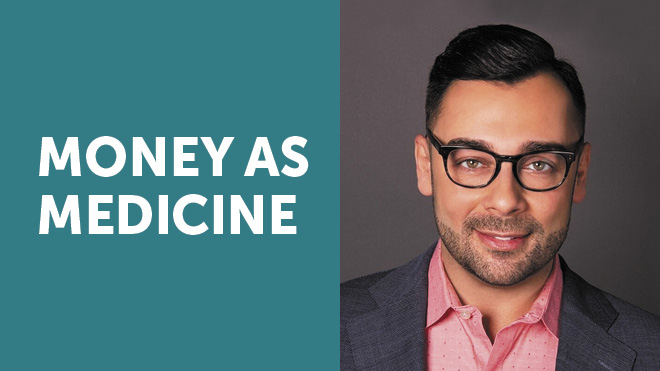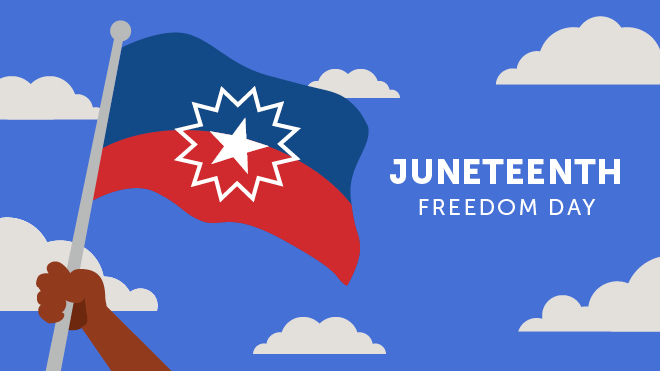
Equity and Access to a Clean Environment
In the U.S., poor communities and communities of color are less likely to have access to basic life-sustaining resources like clean air and water.
Everyone should have clean air to breathe and clean water to drink. After all, air and water are essential for humans to survive, much less thrive.
But access to these basic resources is not guaranteed and it's not equal. In the U.S., poor communities and communities of color have long been more likely to suffer the effects of pollution. Laws and policies meant to protect the environment, and, by extension, public health, have been unequally applied and, in some cases, unenforced.
Movement for Environmental Justice
These long-standing inequities sparked the movement for environmental justice: "The just treatment and meaningful involvement of all people regardless of income, race, color, national origin, Tribal affiliation, or disability in agency decision-making and other federal activities that affect human health and the environment," according to the U.S. Environmental Protection Agency.
Actions to dismantle environmental racism date back to the Civil Rights Movement of the 1960s, according to a timeline on the EPA website.
"Whether by conscious design or institutional neglect, communities of color in urban ghettos, in rural 'poverty pockets,' or on economically impoverished Native-American reservations face some of the worst environmental devastation in the nation," wrote Professor Robert Bullard, a leader of the environmental justice movement, in the often-cited 1993 book, "Confronting Environmental Racism: Voices from the Grassroots." "Clearly, racial discrimination was not legislated out of existence in the 1960s."
It wasn't until 1994, after decades of lawsuits, demonstrations, studies and reports repeatedly proved the links between racism, poverty and pollution, that President Bill Clinton signed an executive order to address environmental injustices. Yet, inequities persist.
4 Ways Environmental Health Is Linked to Race and Financial Health
Communities of color and low-income communities are disproportionately affected by pollution. Here are four environmental hazards that have an outsized effect on these communities.
1. Toxic Waste
Communities of color are more likely to be exposed to toxic waste. In fact, a seminal study in 1987, Toxic Waste in the United States (PDF), found that race was the main predictor of the location of hazardous waste facilities in the U.S. According to the EPA's study: "... over 15 million African Americans, 8 million Hispanics, and half of all Asian/Pacific Islanders and Native Americans resided in communities with at least one abandoned or uncontrolled toxic waste site."
More recent research suggests that once hazardous waste sites were established in a community, polluting industries continued to go back to those locations because it's easier than finding new sites.
A legacy of racist zoning laws and proximity to these sites keep property values lower, which likely contributes to the nearby populations continuing to be low income and people of color.
2. Climate Change
As the average global temperature increases, heat waves, wildfires, intense storms, warming oceans and land desertification are some of the environmental conditions we can expect. Low-income communities and communities of color are more likely to feel the effects of these climate-related conditions.
- Extreme heat is the underlying or contributing cause of death of an estimated 700 people a year just in the U.S., according to the CDC, and that number is rising. More than 2,000 people died due to extreme heat in the U.S. in 2023, according to CDC provisional data. Low-income people are at greater risk because they are more likely to live in buildings without air conditioning and have underlying medical conditions that make them more vulnerable.
- Wildfires are increasing with more heat and less precipitation. Wildfires are expected to double the area burned by fire by the 2040s, compared with the period from 1916-2006, according to the Washington Department of Health, citing a report by the University of Washington Climate Impacts Group. Wildfires increase air pollution for everyone, but communities of color and low-income communities are more vulnerable because of increased exposure to air pollution and other environmental and health challenges.
- Intense storms statistically cause more damage in low-income areas, where homes are likely to have less stable infrastructure, be in flood-prone areas and be near industrial facilities that pose greater risk of chemical spills during natural disasters. Poor residents also are less likely to have high-cost flood insurance and are less likely to be able to afford a move to a lower-risk area.
- Warming oceans lead to ocean acidification and decreased oxygen levels. Ocean acidification prevents some shellfish from forming shells and decreasing oxygen forces marine life to migrate or die. Communities such as coastal Native American tribes who rely on fish as a staple in their diet and income are at greater risk.
- Land desertification and degradation is caused by drought and other extreme weather, over-cultivation of crops, over-grazing of livestock, urbanization and deforestation. Land degradation and desertification reduces the amount of land available for food production and causes water sources to dry up. This increases the risks of malnutrition and disease. Respiratory diseases increase from more dust, erosion and other air pollutants. Poor people, who are less able to relocate, are at greater risk.
3. Air Quality
On average, communities of color in the U.S. — especially Black and Latinx Americans — live closer to and are exposed to higher levels of air pollution from transportation, coal plants and other high-emission industries. This increased exposure also increases rates of respiratory diseases, reduced lung function and asthma. It also can damage the heart, cause strokes and lead to earlier deaths.
A recent study links this disproportionate exposure to the practice of redlining, a discriminatory government practice from the 1930s of drawing red lines around predominantly Black communities to identify them as high-risk real estate and lending zones. Redlining was outlawed with the passage of the 1968 Fair Housing Act, but the effects have been long-lasting and continue to harm communities of color.
4. Drinking Water Quality
Systemic racism has also created and perpetuates inequities in access to clean drinking water, due to aging infrastructure in predominantly non-white communities, according to The Lancet Global Health's article, "The Effects of Racism, Social Exclusion, and Discrimination on Achieving Universal Safe Water and Sanitation in High-Income Countries."
Another report, by the Natural Resources Defense Council, found that officials are slower to respond to and enforce drinking water violations in communities of color and low-income communities, decreasing access to safe drinking water.
Ongoing Environmental Justice Efforts
While stronger environmental laws and policies such as the Clean Air Act, Clean Water Act and Environmental Justice executive order, have helped improve environmental conditions, they aren't final solutions.
Anita Desikan, a senior analyst for the Union of Concerned Scientists, wrote about environmental justice advancements at the federal level, including agencies' commitment to stronger enforcement, the CDC's acknowledgement of racism as a serious public health threat, and formal recognition of Indigenous traditional ecological knowledge.
Solving the problems created by a long history of environmental racism will require continued effort at the local, state and federal level, and by public, private and nonprofit organizations.
The above article is intended to provide generalized financial information designed to educate a broad segment of the public; it does not give personalized financial, tax, investment, legal, or other business and professional advice. Before taking any action, you should always seek the assistance of a professional who knows your particular situation when making financial, legal, tax, investment, or any other business and professional decisions that affect you and/or your business.


